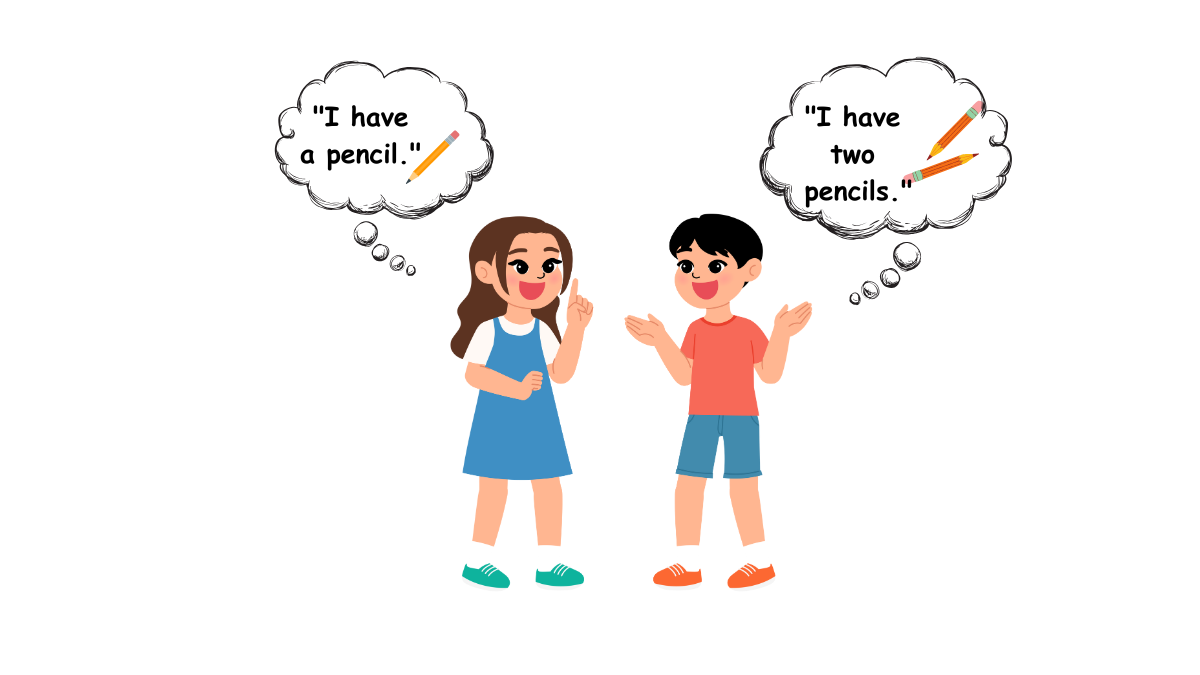Singular & Plural Nouns
Discover the difference between singular and plural nouns with fun facts, clear examples & interactive quizzes. Master plurals and level up your grammar skills.

Singular nouns imply a single item, person, or place, commonly contrasted with plural nouns, which refer to more than one person, thing, or place.
Singular: Singular nouns refer to only one thing, for instance, a cat, a book, a girl, etc.
Plural: A plural noun is a noun that stands for more than one thing.
Most of them form their most of their plurals from the singular form by the addition of "s" at the end. For instance, cats, books, girls, etc.
Certain words express distinct rules for forming the plurals. Thus, a few are those whose plural is formed by substituting the "y" at the end for "ies." Hence, party becomes parties & baby becomes babies.
What I Already Know (about Singular and Plural Nouns)
Think about the things that happen in your daily life & distinguish how we use singular & plural nouns in our talks.
Example:

Write the Plural Form of the Words Below
-
Cat - Cats
-
Dog - __________
-
Box - __________
-
Baby - __________
-
Party - __________
-
Leaf - __________
-
Friend - __________
-
Chair - __________
Identify Singular and Plural Types of Nouns
Ask students to look at sentences & identify the singular and plural nouns.
-
Example 1: The cat is playing with a ball.
-
Singular: cat
-
Plural: ball
-
Example 2: The cats are playing with balls.
-
Singular: cats
-
Plural: balls
Replace “y” with “ies”
-
Baby - Babies
-
City - ________________
-
Party - ________________
-
Story - ________________
-
Candy - ________________
Rule: If a noun ends in a consonant + "y," change the "y" to "ies" to make it plural. If the noun ends in a vowel + "y," just add an "s."
List of Singular and Plural Noun Words
|
Singular |
Plural |
|
Book |
Books |
|
Child |
Children |
|
City |
Cities |
|
Class |
Classes |
|
Dog |
Dogs |
|
Family |
Families |
|
Lady |
Ladies |
|
Boy |
Boys |
|
Party |
Parties |
|
Baby |
Babies |
Frequently Asked Questions (FAQ)
What is the difference between singular and plural nouns?
A singular noun refers to one item, & a plural noun refers to more than one item.
How do you form the plural of nouns that end in “s,” “x,” “z,” “ch,” or “sh”?
For nouns that end in "s," "x," "z," "ch," or "sh," add "es" to make them plural.
Example:
-
Box -> Boxes
-
Watch -> Watches
What if a noun ends in "y"?
If a noun ends in "y" preceded by a consonant, change the "y" to "ies" to make it plural (e.g., baby -> babies). If the "y" is preceded by a vowel, simply add "s" (e.g., toy -> toys).
CBSE Schools In Popular Cities
- CBSE Schools in Bangalore
- CBSE Schools in Mumbai
- CBSE Schools in Pune
- CBSE Schools in Hyderabad
- CBSE Schools in Chennai
- CBSE Schools in Gurgaon
- CBSE Schools in Kolkata
- CBSE Schools in Indore
- CBSE Schools in Sonipat
- CBSE Schools in Delhi
- CBSE Schools in Rohtak
- CBSE Schools in Bhopal
- CBSE Schools in Aurangabad
- CBSE Schools in Jabalpur
- CBSE Schools in Jaipur
- CBSE Schools in Jodhpur
- CBSE Schools in Nagpur
- CBSE Schools in Ahmednagar
- CBSE School In Tumkur











